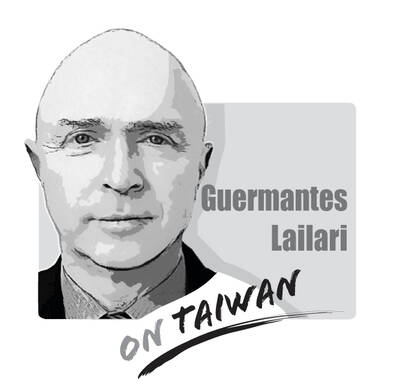The drought-induced run-up in corn prices is a reminder that we are nowhere near solving the problem of feeding the world. The price surge, the third major international food price spike in the past five years, casts more doubt on the assumption that widespread economic development leads to corresponding gains in agriculture.
The green revolution has slowed since the early 1990s, and it has become harder to bolster crop yields, as I have discussed in my book, An Economist Gets Lunch. Recent research by Dani Rodrik, a professor of international political economy at Harvard, indicates that agricultural productivity improvements are among the hardest to transmit from one nation to another.
For all its importance to human well-being, agriculture seems to be one of the lagging economic sectors of the past two decades. That means the problem of hunger is flaring up again, as the World Bank and several UN agencies have recently warned.

Consider Africa, which is often considered to have turned a corner and to be headed toward steady growth. The expansion of the African middle class and the decline in child mortality rates are both quite real, but the advances have not been balanced — and agriculture lags behind.
In a recent address, Michael Lipton, an economist and research professor at Sussex University in Britain, offered a sobering look at Africa’s agricultural productivity. He suggests that Rwanda and Ghana are gaining, but that most of the continent is not. Production and calorie intake per capita do not seem to be higher today than they were in the early 1960s. It remains an issue how Africa’s growing population will be fed.
One huge problem is that the price of fertilizer in Africa is often two to four times the world price. Yet African soil and rainfall make much of the continent subpar for growing food. In other words, the region that probably needs fertilizer the most also has to pay the most for it, and much of Africa does not have the prosperity to make this an easy stretch. The high prices result in large part from infrastructure and trade networks that are not developed enough to create a low-cost and competitive market. And the problem could worsen if economic troubles in China distract it from its beneficial investments in African roads and harbors.
On top of all that, many African nations have unhelpful policies toward agriculture. Malawi, for instance, subjects corn to periodic export and import restrictions as well as to price controls, all of which thwart development of a well-functioning market. When market speculators save corn in anticipation of greater scarcity, they may be punished by law. These restrictions of market incentives exacerbate the basic supply problems.
Such bottlenecks are a challenge for the future of the African economies. For comparison, the rapid expansions of economic growth in Taiwan, Japan and South Korea were all preceded by significant progress in agricultural productivity. In these countries, higher yields created a domestic surplus for savings and investment, encouraged small-scale entrepreneurship, fostered a sense of economic security and helped the middle class expand.
In contrast, much of Africa’s growth has come from resource wealth — such as oil, diamonds, gold and strategic minerals — and, unfortunately, resource prices are notoriously volatile. Resource wealth is less well-suited to supporting sustainable democracies, because it tends to be connected with state-backed privileges and other legally entrenched entities. The Norwegian government manages its oil wealth just fine, for example, but autocracies and fledgling democracies are more likely to be corrupted.
There is no shortage of writing — often from a locavore point of view — in support of more organic methods of farming, for both developed and developing countries. These opinions recognize that current farming methods bring serious environmental problems involving water supplies, fertilizer runoff and energy use. Yet organic farming typically involves smaller yields — five to 34 percent lower, as estimated in a recent study in the journal Nature, depending on the crop and the context. For all the virtues of organic approaches, it is hard to see how global food problems can be solved by starting with a cut in yields. Claims in this area are often based on wishful thinking rather than a hard-nosed sense of what is practical.
What to do? First, put food problems higher on the agenda. In the US, there is no general consciousness of the precarious state of global agriculture. Even in the economics profession, the field of agricultural economics is often viewed as secondary in status.
Second, the US government should stop subsidizing its own corn-based biofuels, mainly ethanol. Today, about 40 percent of the US’ field corn goes into biofuels, thanks to a subsidy and regulatory policy dating to 2005. With virtual unanimity, experts condemn these subsidies as driving up food prices, damaging land use and costing the taxpayers money. Once the energy costs of producing the biofuels are taken into account, it does not even appear that this policy helps slow climate change. It has become a form of crony capitalism, at great global expense.
Today, we have two presidential candidates who both look a bit short on grand vision and transformational change. Perhaps they could look to helping solve the food problem — and making a big dent in global hunger — as the US’ next beneficial legacy.
The world is not yet in that happy situation where “what’s for dinner?” is a boring question.
Tyler Cowen is a professor of economics at George Mason University in Virginia.

Chinese state-owned companies COSCO Shipping Corporation and China Merchants have a 30 percent stake in Kaohsiung Port’s Kao Ming Container Terminal (Terminal No. 6) and COSCO leases Berths 65 and 66. It is extremely dangerous to allow Chinese companies or state-owned companies to operate critical infrastructure. Deterrence theorists are familiar with the concepts of deterrence “by punishment” and “by denial.” Deterrence by punishment threatens an aggressor with prohibitive costs (like retaliation or sanctions) that outweigh the benefits of their action, while deterrence by denial aims to make an attack so difficult that it becomes pointless. Elbridge Colby, currently serving as the Under
The Ministry of the Interior on Thursday last week said it ordered Internet service providers to block access to Chinese social media platform Xiaohongshu (小紅書, also known as RedNote in English) for a year, citing security risks and more than 1,700 alleged fraud cases on the platform since last year. The order took effect immediately, abruptly affecting more than 3 million users in Taiwan, and sparked discussions among politicians, online influencers and the public. The platform is often described as China’s version of Instagram or Pinterest, combining visual social media with e-commerce, and its users are predominantly young urban women,
Most Hong Kongers ignored the elections for its Legislative Council (LegCo) in 2021 and did so once again on Sunday. Unlike in 2021, moderate democrats who pledged their allegiance to Beijing were absent from the ballots this year. The electoral system overhaul is apparent revenge by Beijing for the democracy movement. On Sunday, the Hong Kong “patriots-only” election of the LegCo had a record-low turnout in the five geographical constituencies, with only 1.3 million people casting their ballots on the only seats that most Hong Kongers are eligible to vote for. Blank and invalid votes were up 50 percent from the previous
Japanese Prime Minister Sanae Takaichi lit a fuse the moment she declared that trouble for Taiwan means trouble for Japan. Beijing roared, Tokyo braced and like a plot twist nobody expected that early in the story, US President Donald Trump suddenly picked up the phone to talk to her. For a man who normally prefers to keep Asia guessing, the move itself was striking. What followed was even more intriguing. No one outside the room knows the exact phrasing, the tone or the diplomatic eyebrow raises exchanged, but the broad takeaway circulating among people familiar with the call was this: Trump did